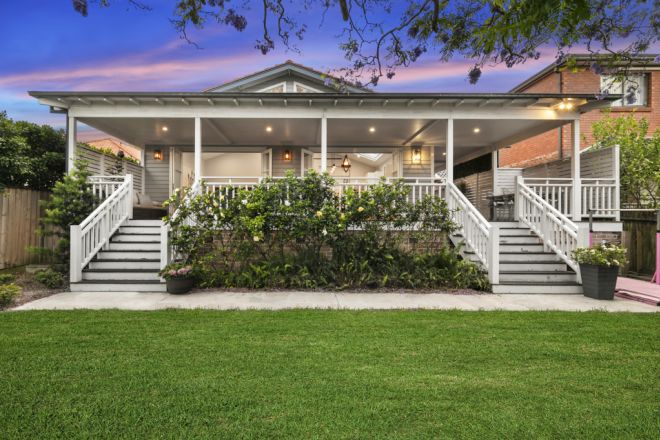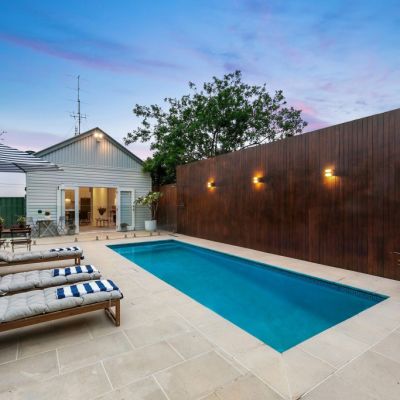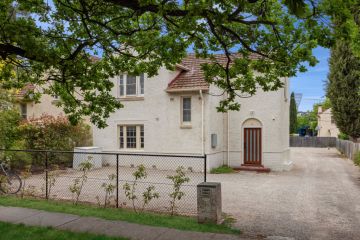Where house prices are falling most, and why ‘it doesn’t really help’
Property prices have started falling, but the downturn so far pales in comparison to the growth over the longer term and offers only modest improvement to housing affordability.
Sydney’s median dwelling value has fallen 1.4 per cent over the past three months, and is now 70.4 per cent higher than a decade ago, CoreLogic figures show.

Melbourne’s most-recent downturn began earlier last year, and values are now 6.4 per cent below their peak, but 49.3 per cent higher than 10 years ago.
The long-term gains in Hobart and Canberra also far outstrip the more recent falls, although property values in Brisbane and Perth are still rising, albeit at a slower pace, and hit fresh peaks last month.
CoreLogic head of research Tim Lawless said values had been falling recently due to sustained higher interest rates that had limited borrowing capacity for buyers. In Melbourne, the market had also been affected by a weaker economy, the increase in land tax on investment properties and better long-term pace of home building for its population.
But Lawless said housing values generally increased over the long term due to an overall shortage of supply of homes compared with buyer demand – even though there had been some dips over the decade, such as when the bank regulator had cracked down on lending and when interest rates had risen in 2022.
For potential home buyers, he said the recent falls in value were positive. The typical Melbourne home now costs about $53,000 less than its peak.
“That’s definitely not an inconsequential number for a lot of people – a $53,000 decline at a time where incomes have risen is a welcome outcome,” he said.
Sydney, though, is about $16,400 cheaper than three months ago.
“That is a lot of money, don’t get me wrong. It sounds insignificant compared to the median value, which is about $1.2 million, but it’s a start. I think we’ll see values drifting lower for the first half of the year,” Lawless said.
But he acknowledged that values remained high compared with household incomes. Sydney’s median dwelling cost 9.8 times as much as the median income in September, the latest figure available, and one that Lawless says has probably remained similar since. In March 2020, it was 8.6 times the median income – lower, but still elevated.
“We’d need to see that ratio come down a lot before we’d start to describe the marketplace as getting more affordable,” he said.
Melbourne’s dwelling value to income ratio is now 7 times, an improvement from 7.5 times in March 2020, which Lawless describes as “probably not really healthy, but it’s healthy in relativity to most of the other capital cities”, except Canberra and Darwin.
AMP chief economist Shane Oliver was more pessimistic.

“It doesn’t really help much,” he said. “That’s been the story of the past 20 years: that you see these big gains, and then prices come off a little bit. Everyone gets excited, but in reality, affordability is still pretty poor. What you’re seeing in some of those cities is just a flick off the top.”
Oliver said Melbourne was a little more affordable after prices had fallen for several months, but the falls had come after huge gains over a long period, interspersed with occasional setbacks.
He said that in the late 1990s, property prices had been about four times higher than household disposable incomes, a ratio now pushing towards eight times.
A substantial fall would be needed for affordability to improve, but the problem was this would likely happen only in a recession, and many people would become unemployed, he said.
“The best situation on a sustainable basis would be 10 years of house prices going nowhere at the same time as incomes rise,” he said.
“To get that scenario probably requires a big rebalancing of the supply-demand situation.”
Sally Tindall, data insights director at comparison platform Canstar, also thought property prices remained too high for first-home hopefuls.
“It could fall a lot further and still people wouldn’t be able to afford the keys to their first home,” she said.
“Property prices in hotspots such as Sydney are way out-of-reach, particularly for people looking for a patch of grass or three bedrooms to house a family.”
Banks were often unwilling to lend large enough sums, while buyers faced taking on huge amounts of debt, she said, prompting some to compromise on location.
On the flipside, Tindall said small falls of this kind did present a potential window of opportunity for first home buyers who were ready to buy and didn’t change their strategy based on house price forecasts.
“People that have been trying to get in for more than 12 months, in some cases years and years, they jump at those windows.”
We recommend
We thought you might like
States
Capital Cities
Capital Cities - Rentals
Popular Areas
Allhomes
More
- © 2025, CoStar Group Inc.








